TP-Link sold me on their mesh Wi-Fi sets a while ago, with Deco sets proving their worth as a solution to my issues with poor wireless reception in my home office and beyond. Mesh Wi-Fi sends network traffic through multiple nodes, so practically every inch of your home can be covered with high-speed Internet. TP-Link’s range is ever-expanding, with various models leaning into specific features for different uses, consistently proving to be capable replacements for single routers.
This latest set, Deco X4300 Pro, is another whole-home mesh system featuring the Wi-Fi 6 standard. It’s practically identical in design to other small models in the Deco range. Still, this one boasts 2.5Gbps Ethernet ports for high-speed Multi-Gig connections and multiple wireless devices streaming simultaneously. Its dual-band signal claims to cover a home with up to seven bedrooms with a combined bandwidth of 4,300Mb/s, so I spent the weekend putting it through its paces for our TP-Link Deco X4300 Pro review.
TP-Link Deco X4300 Pro: Price and availability
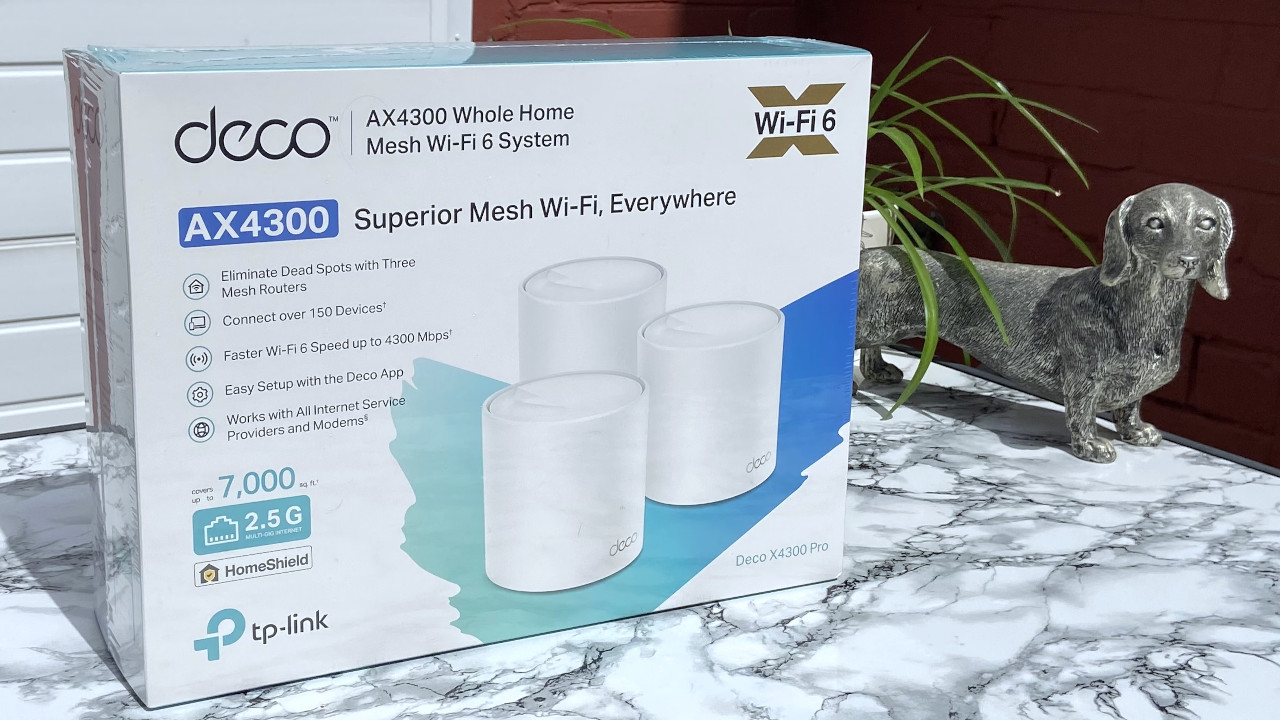
TP-Link sells the Deco X4300 Pro (AX4300) whole-home mesh Wi-Fi 6 system through the official TP-Link store and Best Buy for a $400 MSRP. It’s sold as a three-pack with one Ethernet RJ45 cable and three AC power adaptors.
TP-Link Deco X4300 Pro: What you’ll like
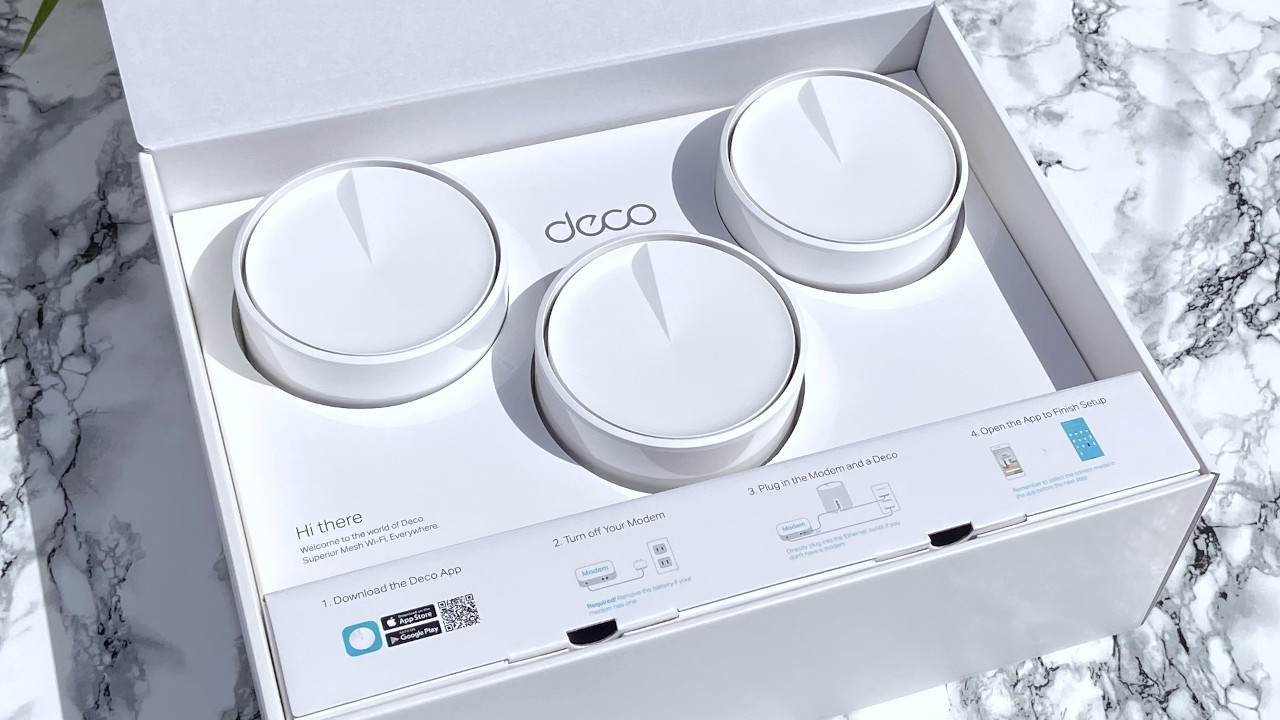
Since this isn’t my first rodeo with a TP-Link Deco set, having reviewed the Deco X55 (opens in new tab) in February earlier this year, I had a relatively good idea of what to expect from an upgraded version. It was a familiar experience, considering the X4300 Pro units are practically identical to the X55, except for sporting an all-over white color scheme instead of a black top. Each Deco has three Ethernet ports for wired devices, but the primary feature this time is the inclusion of one 2.5Gbps Multi-Gig, perfect for anyone receiving super-fast internet from their ISP.
Sadly, I’m not one of those people. Instead, my little town is miles away from any major cities, and I have to settle for a 100Mb down and 10Mb up service. I won’t be pushing this Deco set to its limits by streaming anything from the internet, instead opting to run some tests over the home network. This time, the most intriguing part of TP-Link’s advertisement is the potential coverage for up to 7,000 square feet while providing a combined possible bandwidth of 4,300Mb/s. Considering how much I benefit from the Deco X55 set in my tiny home, the potential for the X4300 Pro to be a powered-up version should make it easier to recommend for anyone with more rooms to cover, so it’s time to set it up.
As with any competent networking manufacturer, TP-Link provides a companion app for Android and iOS explicitly built for configuring and managing the Deco range. Installing it is the easiest way to start, thanks to consistent app updates and modern device support, and is the first recommended step. A complete novice would find the process simple since every part of the process is broken down into easy-to-understand steps with precise descriptions and diagrams, starting you off with one Deco unit to set up the Wi-Fi network. Connecting the first unit to the Multi-Gig WAN port on my router and the AC adapter to power, its little LED soon shows a pulsing blue light, ready to connect.
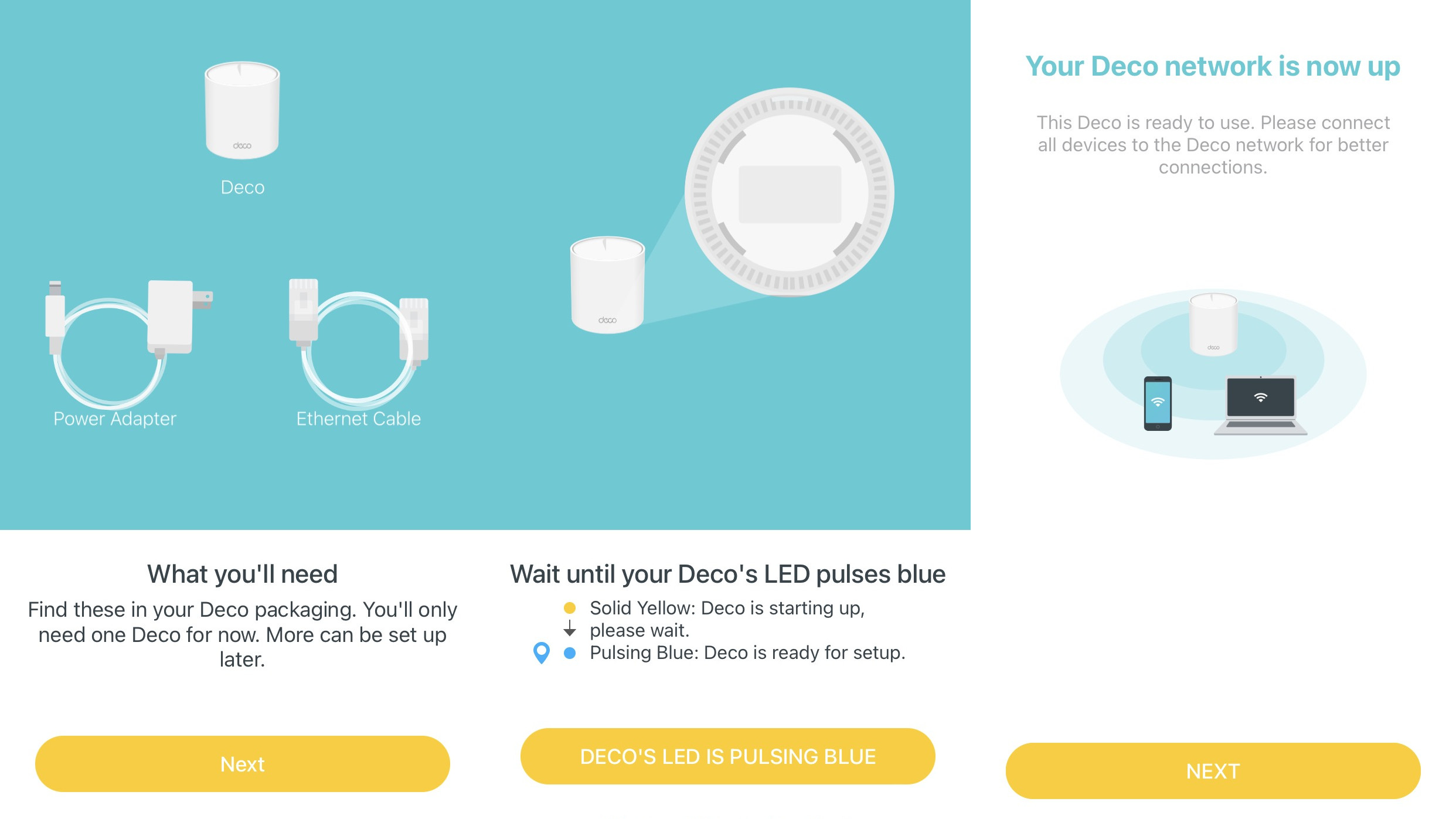
Once the Deco network is up, adding the remaining two units with the app is simple. Connect any wired devices you’d like to take advantage of the Ethernet backhaul support, and the extra nodes will search for their siblings and join automatically. My home office is the farthest-reaching room in my house, where my desktop PC, which lacks a Wi-Fi card, is located. Previously running a ridiculously long Ethernet cable around the attic was the solution for high-speed networking. Still, it was less than ideal and something the Deco X55 solved without sacrificing performance. If the X4300 Pro can supply the same signal strength and at least match the speeds, it’ll suit my home with its super-thick walls notorious for killing wireless signals.
I’m delighted to say that the X4300 Pro holds up under pressure.
TP-Link recommended the same method I already use for testing network speeds, mostly taking advantage of the open-source application iPerf. It’s perfect for sending various data through LAN and monitoring the transfer speeds in real-time, so I connected three separate PCs via the 2.5Gbps Ethernet ports and a collection of wireless devices via the 2.4GHz and 5GHz bands. As recommended, I ran the network optimization tool within the Deco app, allowing the units to select the best Wi-Fi channel and suggesting whether I should move any nodes closer to one another. The Deco app reported everything to be perfect since I already use the optimal placement. Activating a series of iPerf stress tests all at once, I’m delighted to say that the X4300 Pro holds up under pressure, and that each device maintained the expected speeds.
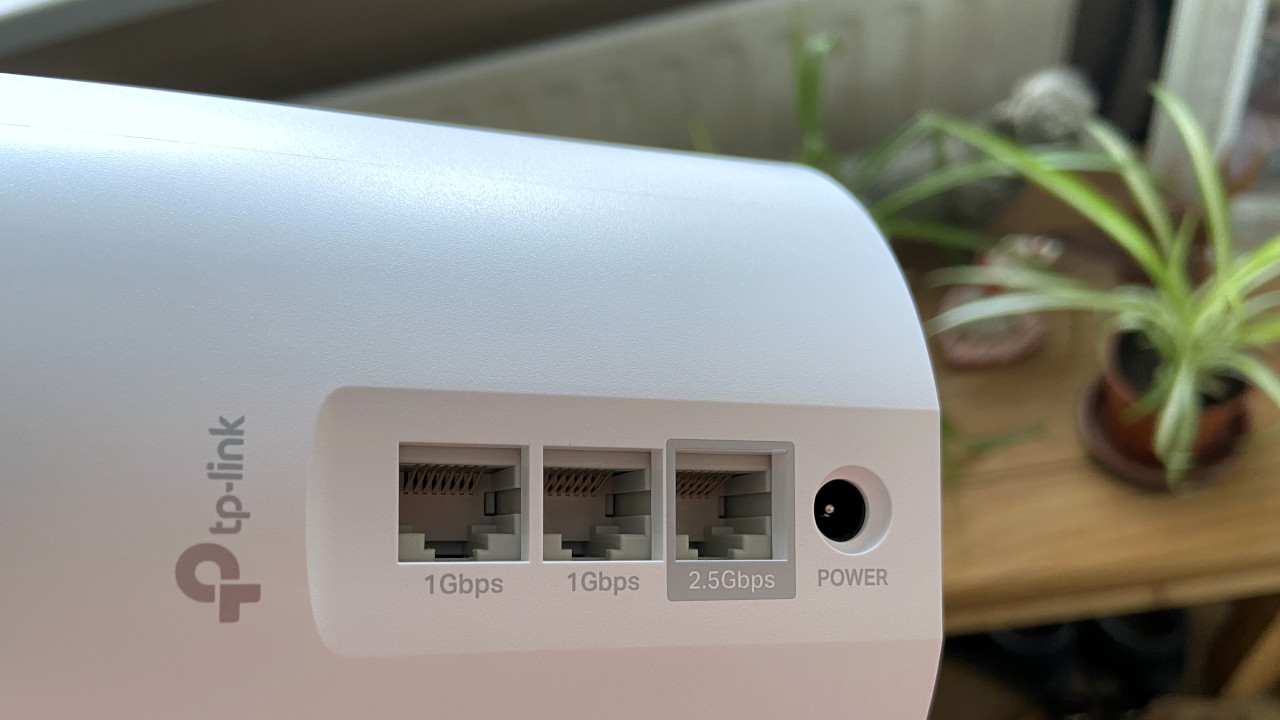
I connected two Windows desktops and a single Linux laptop via Ethernet plus a Wi-Fi 6-enabled iPhone 11 over 5GHz using an app version of iPerf. All wired devices maintained a steady transfer rate between 927Mb/s and 940Mb/s simultaneously. However, I couldn’t seem to break 738Mb/s on the iPhone no matter where I stood in the house, not quite hitting the supposed maximum of 877Mb/s, according to Apple. It’s still a decent speed, considering the traffic going through the Deco system at the time, and everything seems to match up with TP-Link’s advertisement. TP-Link claims the X4300 Pro supports six simultaneous streams, four at 960.8Mb/s on the 5GHz band and a pair of 2.4GHz streams at 229.4Mb/s each for a total 4,300Mb/s bandwidth, hence the name.
(Up to six) wired devices maintain a steady transfer rate between 927Mb/s and 940Mb/s simultaneously.
Although the wireless devices never quite hit their full potential, anything connected over Ethernet performed flawlessly. Considering all three Deco units feature a triplet of LAN ports, any wired devices in your home should be able to hit the purported speeds on the X4300 Pro. A combination of all the advancements the Wi-Fi 6 standard brings, like OFDMA and MU-MIMO, are in full effect to handle multiple high-speed devices at once. You’ll also enjoy 1024-QAM and BSS color, but this is when the jargon gets a little complicated. You can rest assured there’s plenty of tech inside these little Deco units to keep your high-speed network running smoothly, confirming it deserves the “Pro” title.
TP-Link Deco X4300 Pro: What you won’t like
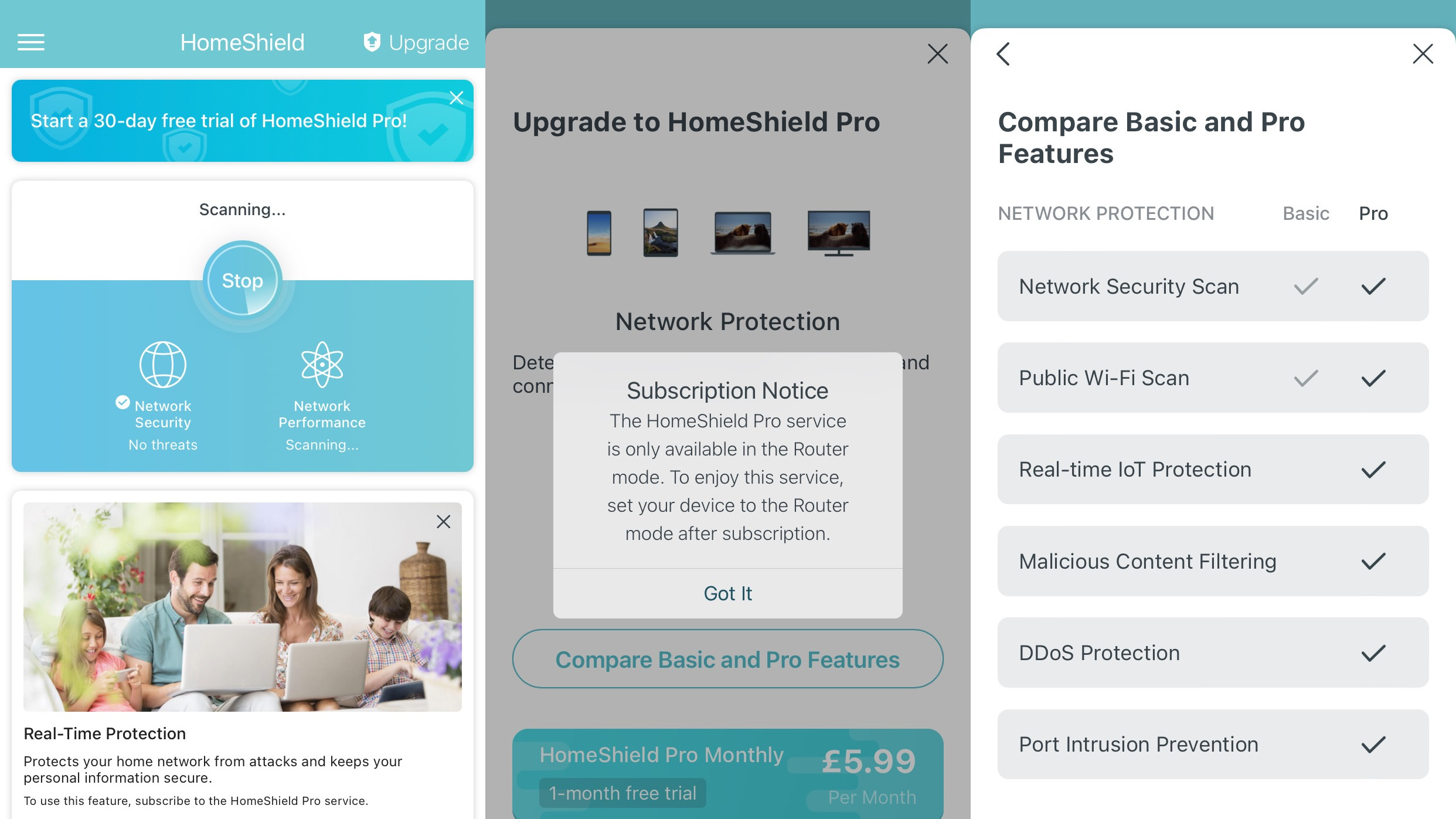
There’s little to complain about with the Deco X4300 since TP-Link has packed so much modern wireless tech into these compact mesh nodes sitting comfortably in any home, often mistaken as a smart home speaker. Unfortunately, the same minor frustrations from other TP-Link Deco kits return, including the AC power cord length. Since placement is paramount for mesh Wi-Fi, you’ll often find that the ideal place for the units isn’t conveniently next to an outlet. It’s not fair to blame the manufacturer for the construction of a house, and a socket extension is a simple solution, but I’d still prefer just a bit more reach on each Deco. The included Ethernet cable is woefully short, too, so your router needs to be less than 2 meters from your base unit if you plan to use it.
TP-Link’s HomeShield network protection service is still based on a subscription if you want anything outside of basic diagnostics, and it only works if you run the Deco in router mode, not as a set of access points. Considering the asking price for the unit, it feels somewhat harsh to want an additional $6 a month (still £6 in the UK) for full parental controls and proper protection against malicious attacks. Perhaps a mesh set as expensive as this could at least include a coupon for some free months of HomeShield Pro, but monetizing features like this has become an unfortunate trend in networking hardware, so it’s not too surprising. Budgets are the biggest roadblock for the X4300 Pro, then, and it’s so similar to other models in the Deco range that you’ll need to ensure you can use its full potential.
If you’re pulling in a Multi-Gig connection from your ISP and want to wirelessly distribute the bandwidth around your home to wireless and wired devices, you’ll do well with its Ethernet backhaul support and Wi-Fi 6 tech; otherwise, it’s needless spending. The X4300 Pro only loses a half star for its locked-out HomeShield subscription functions and a few hardware frustrations, including a total lack of USB ports ruling out NAS drives. Still, most of my warnings are related to its potential for complete overkill for the average user, not actual flaws.
TP-Link Deco X4300 Pro: The competition

The most obvious comparison is to another Wi-Fi 6 set featuring an almost identical design, the TP-Link Deco X55 (opens in new tab). This cheaper option offers fewer streams with lower bandwidth, but the price drop is enormous and would likely suit most homes perfectly fine. If the Deco X4300 is a Pro model, then the X55 is almost certainly the standard edition. Compare the specifications below to help decide whether you need the Pro model.
| Deco X55 (AX3000) | Deco X4300 Pro | |
|---|---|---|
| MSRP (3-pack) | $280 | $400 |
| Bandwidth | 2402Mbps (5GHz) | 3843Mbps (5GHz) |
| 574Mbps (2.4GHz) | 459Mbps (2.4GHz) | |
| Range | 4-6+ room house | 4-7+ room house |
| Ports | 3x Gigabit LAN | 1x 2.4Gbps LAN |
| 2x Gigabit LAN | ||
| Capacity | 4 streams | 6 streams |
| Antennas | 2x (internal) | 4x (internal) |
Remember that the advertised line rate refers to a combined bandwidth potential on a clear Wi-Fi channel. The Deco X55 uses four simultaneous streams divided into a 5GHz and 2.4GHz band, and the Deco X4300 Pro uses eight streams divided into the same dual-band setup. There’s an across-the-board improvement on the X4300 Pro, but you should only choose it if your devices would need the extra performance.
TP-Link Deco X4300 Pro: Should you buy?
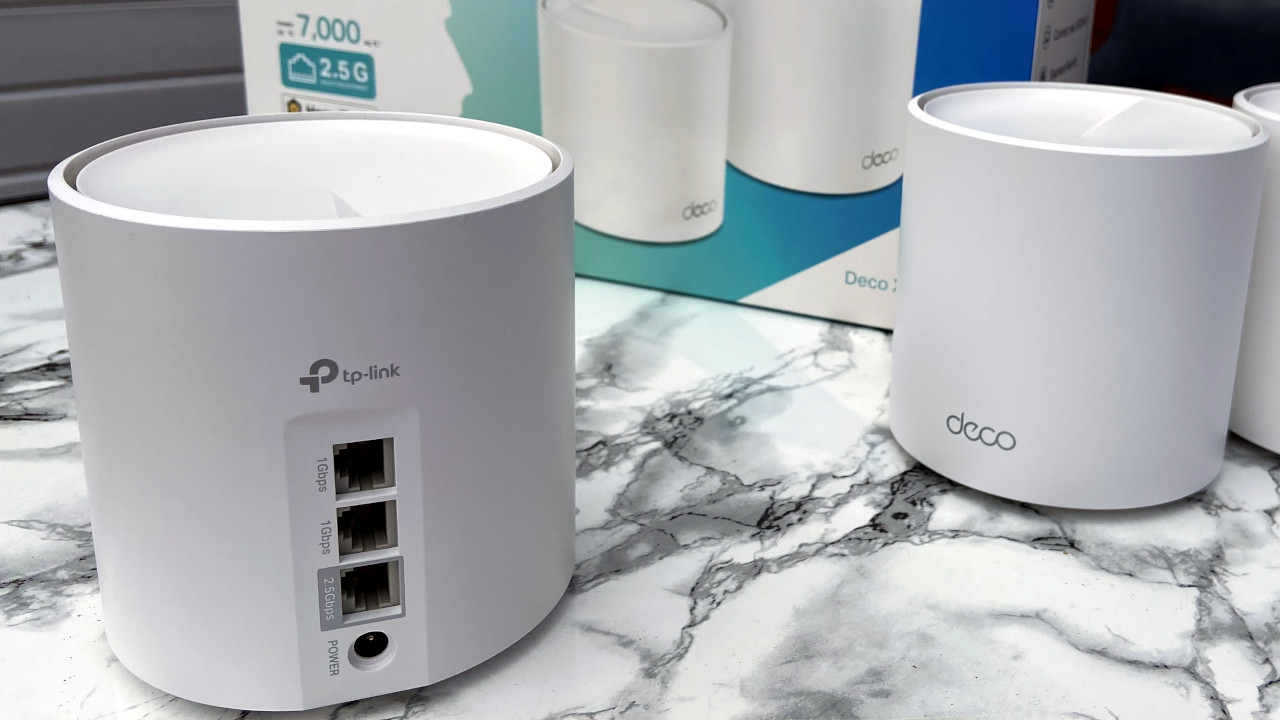
You should buy this if …
- You have super-fast Gigabit Internet
- Your wireless devices support the Wi-Fi 6 standard
- You struggle with Wi-Fi signal dead spots
You shouldn’t buy this if …
- Your devices would never reach the potential speeds
- You rely on USB-powered network-attached storage
TP-Link has expanded its Deco range with various takes on the same mesh concept, solving the issue of Wi-Fi dead spots at home. The X4300 Pro takes its name seriously, offering a more advanced feature set than most consumer-grade networking hardware. If you’re connected to your ISP with a Gigabit package or better, this set can help feed super-fast internet around the home. If not, you’re more likely overreaching and would fare better with a cheaper TP-Link kit like the Deco X55.
A lack of USB ports means no NAS drives or printers, and the lengths of the included AC adapter and Ethernet cables can cause frustration when deciding where to place the Deco units around the house, but the downsides are mostly trivial. The X4300 Pro is a powerful, whole-home mesh Wi-Fi solution for anyone looking to connect modern devices and maximize data transfer speeds. Easily competing with the best mesh Wi-Fi router systems (opens in new tab), TP-Link continues to be a reliable name in networking hardware, with another winner in the Deco range.
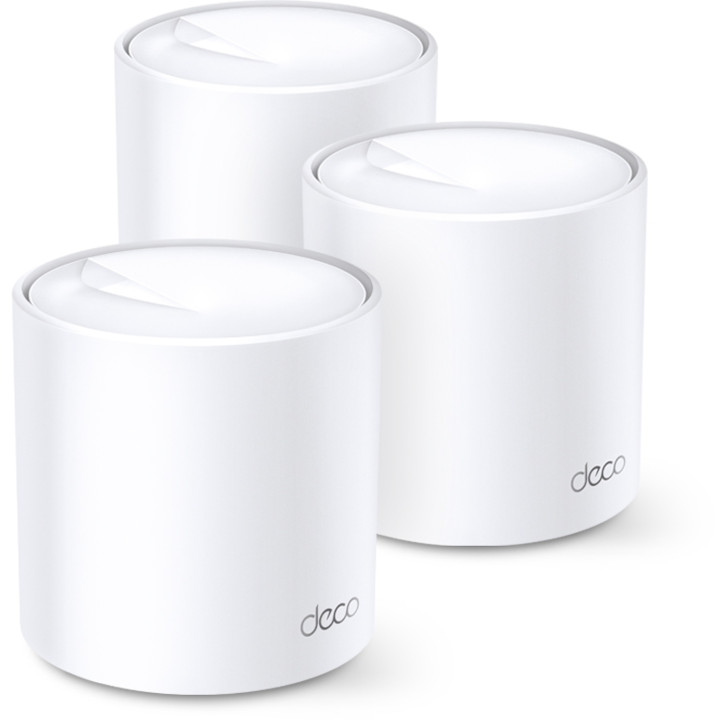
(opens in new tab)
The benefits of the Wi-Fi 6 standard enhance this mesh Wi-Fi system, allowing it to supply Gigabit speeds around your home wirelessly. The X4300 Pro is the ideal solution for a high-speed ISP paired with modern devices.




